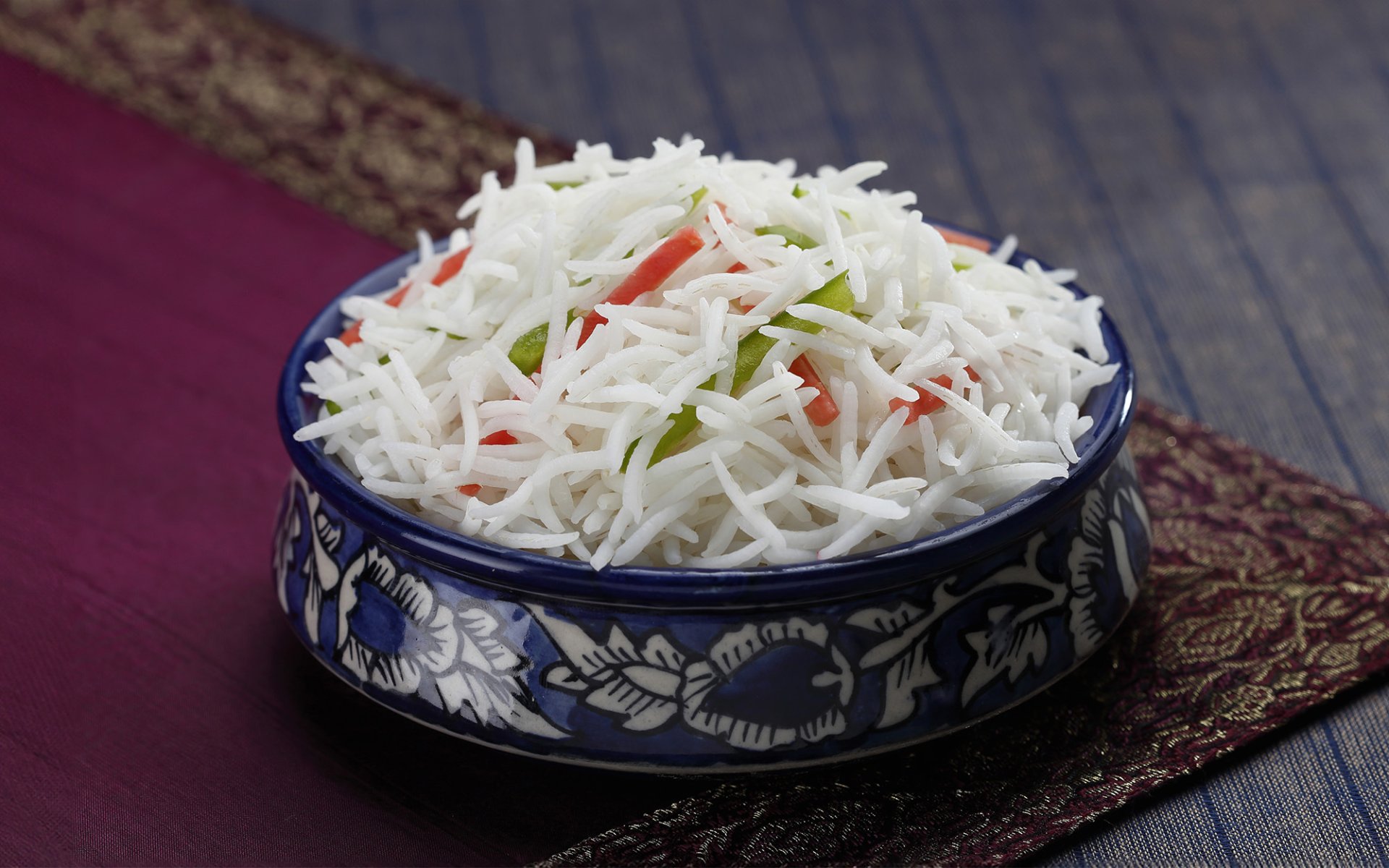Basmati

Rice has been a staple food nourishing humanity for thousands of years. Across the globe, there are numerous rice varieties, and one of the world's most popular is Basmati rice from India, distinguished by its slender grains and unique aroma. Today, Rimping Supermarket invites you to discover this Queen of Fragrance.
Basmati: The Queen of Fragrance from the Himalayan Foothills
Basmati is a Hindi word meaning fragrant queen, a name that perfectly describes this rice's unique aroma. The origin of Basmati rice dates back 2,500 BC on the Indian subcontinent. Historically, it was widely cultivated in the fertile plains of the Punjab region at the foothills of the Himalayas, covering parts of present-day India and Pakistan.
The first written mention of Basmati rice comes from the 18th-century Punjabi epic poem Heer Ranjha, written by Waris Shah. This poem notes that Basmati rice was immensely popular among Indian royalty, especially during the Mughal Empire. It is said that the Mughal emperors greatly favored Basmati rice for its delicate aroma and slender grains. Their appreciation led to widespread cultivation and facilitated its trade.
Global Spread and Distinctive Qualities
Indian traders introduced Basmati rice to the Middle East via the Silk Road during the medieval period. Since then, Basmati rice has become an integral part of Arabic, Persian, Pakistani, Bangladeshi, and other cuisines. It is commonly used in dishes such as Indian chicken biryani, pilaf, rice pudding, and served steamed with curries or stews.
Over time, Basmati rice gained international renown, attracting the attention of chefs and food enthusiasts worldwide. Its distinctive characteristics, unlike other rice varieties, include long, slender grains, soft texture, and a unique aroma. It is non-sticky when cooked, with grains remaining separate and fluffy, yielding a high volume.
Nutritional Value and Geographical Dispute
Beyond its unique characteristics, Basmati rice also stands out for its nutritional value. It is rich in essential nutrients vital for the body, including carbohydrates, protein, vitamins, and minerals. For example, fiber aids in digestive health, and phosphorus contributes to stronger bones.
In the 1990s, a dispute arose between India and Pakistan regarding the Geographical Indication (GI) status of Basmati rice, as both countries claimed their regions as the authentic producers of Basmati. Eventually, the dispute was resolved, with both countries receiving joint GI status for Basmati rice.
Basmati Today: Cultivation and Global Market Role
Today, Basmati rice continues to be cultivated in the fertile plains of the Punjab region in India and Pakistan, using traditional farming methods, including hand-sowing, organic fertilization, and hand-harvesting, which contributes to its unique quality and aroma. Presently, India remains the leading producer and exporter of Basmati rice globally, followed by Pakistan as the second largest.


